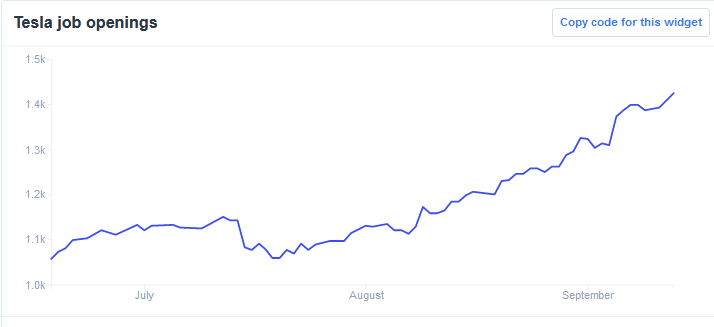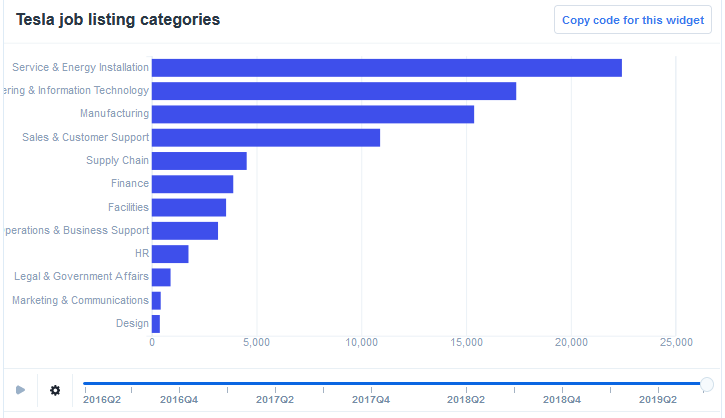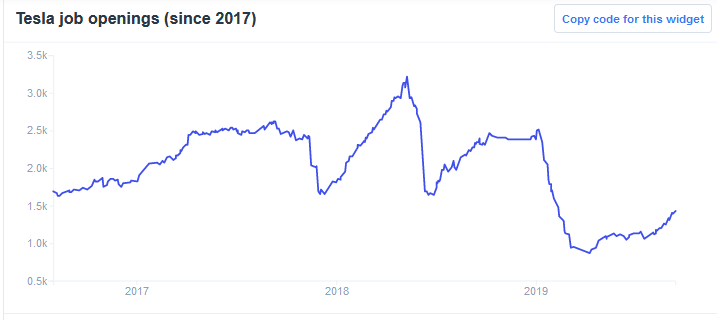Tesla Inc (NASDAQ:TSLA) has had its share of ups and downs, from falling behind on vehicle deliveries, to Muskian threats of privatization, and now with incoming competition from auto manufacturers that are finally catching up when it comes to electric vehicle technology. One thing that has always been an indicator of activity at Tesla is massive fluctuations in hiring activity.

This season is no different, as activity at Elon Musk's auto company suggests that Tesla (NASDAQ:TSLA) doesn't plan to sit quietly and just let others get a piece of its Electric Vehicle market dominance. That's because since mid-July, hiring at Tesla has soared 33%.
The types of jobs Tesla (NASDAQ:TSLA) is opening points to a maturing auto manufacturer. That's because the most numerous category of job openings at Tesla are for its Service division, with multiple openings for customer-facing service people to repair and refresh Tesla customers' vehicles (and keep them as customers too). After all, the oldest Teslas are now more than 7 years old, and those customers are re-entering the auto market with more options than they had when they originally got into the EV game.


The hiring suggests that Tesla Motors (NASDAQ:TSLA) hopes to keep them around for another vehicle. That's because the second most-common category of jobs at Tesla includes its Software Engineering group, which has been busy building out the company's e-commerce operation in lieu of physical, brick-and-mortar car dealerships. In fact, it displaced Sales & Customer support as the second-most in-demand job category at Tesla in the past quarter.
This latest hiring spree represents the first of its kind since a massive manufacturing run in the summer of 2018 when Elon Musk famously promised to deliver thousands of in-demand Model 3 vehicles per week. Since then, the company has caught up to demand and, as the latest figures suggest, it's moving into a phase of customer retention and sales in a newly competitive marketplace.
About the Data:
Thinknum tracks companies using information they post online - jobs, social and web traffic, product sales and app ratings - and creates data sets that measure factors like hiring, revenue and foot traffic. Data sets may not be fully comprehensive (they only account for what is available on the web), but they can be used to gauge performance factors like staffing and sales.
